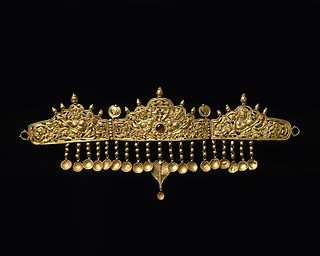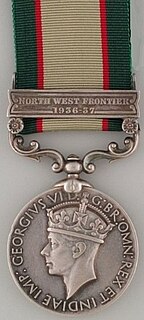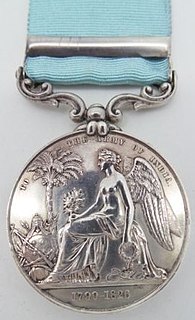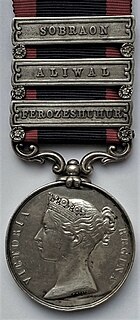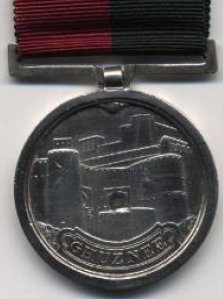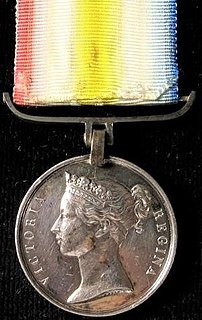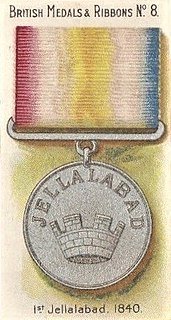| Candahar, Ghuznee, Cabul Medal | |
|---|---|
  Obverse, and reverse of the 'Cabul' version | |
| Awarded by | |
| Country | United Kingdom |
| Type | Campaign Medal |
| Campaign(s) | Kabul Expedition, First Afghan War |
| Clasps | None |
| Statistics | |
| Established | 1842 |
Ribbon bar of the medal | |

The Candahar, Ghuznee, Cabul Medal was awarded to those who took part in the campaign in the spring and summer of 1842, under the command of General William Nott, to restore British standing in Afghanistan after earlier defeats during the First Anglo-Afghan War.

The Battle of Kabul was part of a punitive campaign undertaken by the British against the Afghans following the disastrous retreat from Kabul. Two British and East India Company armies advanced on the Afghan capital from Kandahar and Jalalabad to avenge the complete annihilation of its military column in January 1842. Having recovered prisoners captured during the retreat, the British demolished parts of Kabul before withdrawing to India. The action was the concluding engagement to the First Anglo-Afghan War.

The First Anglo-Afghan War was fought between the British East India Company and the Emirate of Afghanistan from 1839 to 1842. Initially, the British successfully intervened in a succession dispute between emir Dost Mohammad (Barakzai) and former emir Shah Shujah (Durrani), whom they installed upon conquering Kabul in August 1839. The main British Indian and Sikh force occupying Kabul along with their camp followers, having endured harsh winters as well, was almost completely annihilated while retreating in January 1842. The British then sent an Army of Retribution to Kabul to avenge their defeat, and having demolished parts of the capital and recovered prisoners they left Afghanistan altogether by the end of the year. Dost Mohamed returned from exile in India to resume his rule.
Contents
The medal was approved by General Order at Simla by the Honourable East India Company on 4 October 1842. Approximately 22,100 were awarded, about 4,400 to members of the British Army and 17,700 to the mainly native forces of the Honourable East India Company. [1]

Shimla, also known as Simla, is the capital and the largest city of the Indian state of Himachal Pradesh. Shimla is also a district which is bounded by the state of Uttarakhand in the south-east, districts of Mandi and Kullu in the north, Kinnaur in the east, Sirmaur in the south and Solan in the west. In 1864, Shimla was declared as the summer capital of British India, succeeding Murree, northeast of Rawalpindi. After independence, the city became the capital of Punjab and was later made the capital of Himachal Pradesh. It is the principal commercial, cultural and educational centre of the state.

The East India Company (EIC), also known as the Honourable East India Company (HEIC) or the British East India Company and informally as John Company, Company Bahadur, or simply The Company, was an English and later British joint-stock company. It was formed to trade in the Indian Ocean region, initially with Mughal India and the East Indies, and later with Qing China. The company ended up seizing control over large parts of the Indian subcontinent, colonised parts of Southeast Asia, and colonised Hong Kong after a war with Qing China.

The British Army is the principal land warfare force of the United Kingdom, a part of British Armed Forces. As of 2018, the British Army comprises just over 81,500 trained regular (full-time) personnel and just over 27,000 trained reserve (part-time) personnel.

